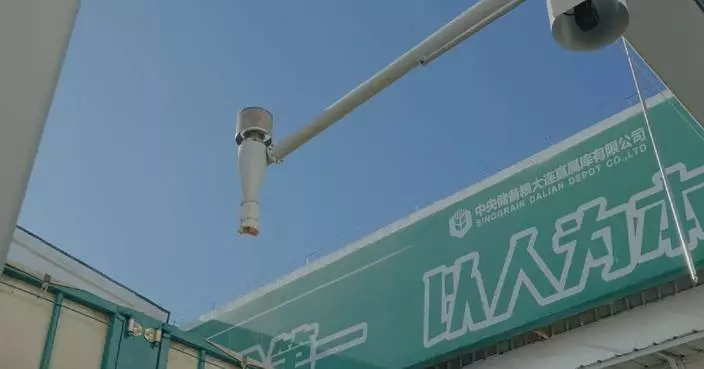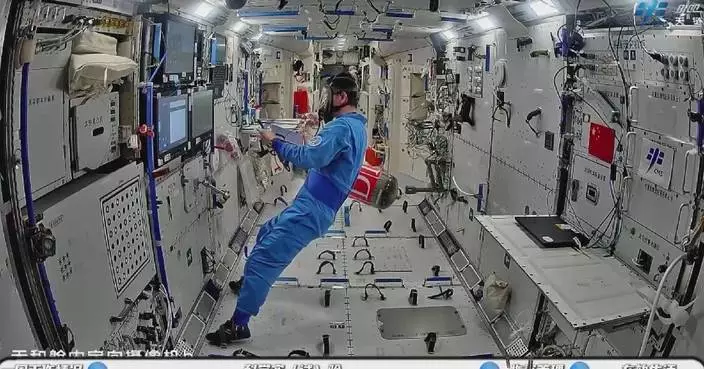China-U.S. relations will only get better if the U.S. regards China as a cooperative partner, according to a commentary published by China Media Group (CMG) on Saturday.
An edited English-language version of the commentary is as follows:
"China is happy to see a confident, open, prosperous and thriving United States, and hopes the United States will also take a positive view of China's development," Chinese President Xi Jinping said when meeting visiting U.S. Secretary of State Antony Blinken at the Great Hall of the People in Beijing on Friday afternoon.
"China and the United States should be partners rather than rivals; help each other succeed rather than hurt each other; seek common ground and reserve differences rather than engage in vicious competition; and honor words with actions rather than say one thing but do the opposite," said Xi.
The strategic sticking point between the two countries is about whether China and the United States should be partners or rivals. This issue is of fundamental importance to the relationship.
If the United States regards China as a cooperative partner, both sides will benefit, and the world will have more stability and certainty. However, if the United States is bent on seeing China as its primary rival, the relationship will only run into more troubles.
Since the meeting between the two heads of state in San Francisco last November, China-U.S. relations have generally stabilized and the two sides have carried out a series of dialogues and cooperated in the fields of diplomacy, economy and trade, law enforcement, agriculture, and military.
Blinken's visit has continued the momentum of high-level exchanges between the two countries. The two sides reached a five-point consensus during his visit, including continuing exchanges between the countries' two militaries, further promoting China-U.S. cooperation on drug control, climate change, and artificial intelligence, and expanding people-to-people and cultural exchanges between the two countries, showing that both sides are willing to maintain dialogue, manage differences, and promote cooperation to speed up the implementation of the important consensus reached by the two heads of state in San Francisco.
It should also be noted, however, that negative trends in relations have deepened despite China-U.S. relations improving overall.
From frequently hyping up the so-called "overcapacity" of China's new energy sources to passing a foreign aid bill involving China's Taiwan region; from denigrating human rights issues in Xinjiang to building a small bloc to contain China in the Asia-Pacific, serial actions by the U.S. side have brought considerable negative impact to bilateral relations.
Li Haidong, head of the American Studies Center at the China Foreign Affairs University, told CMG that the two-faced approach is a chronic problem in the U.S. government's handling of relations with China.
In addition, the election this year in the U.S. has also intensified the political game across the country, adding variables to the U.S. government's China policy and causing its erratic attitude, according to Li.
The fact that the United States needs to cooperate with China while it contains and suppresses China shows that some people in the United States stick to the zero-sum mentality, mistakenly regard China as the "biggest strategic rival", and have strategic miscalculation about China's development intentions.
During the meeting between the two heads of state in San Francisco, President Xi called on the two sides to build five pillars for bilateral relations together, with the first pillar being to jointly develop the right mutual perceptions.
During a phone call with President Biden on April 2, President Xi stressed again that the issue of strategic perception is always fundamental to the China-U.S. relationship, just like the first button of a shirt that must be put right.
During Blinken's visit this time, the Chinese side also emphasized that China is a socialist country that follows the path of peaceful development. The logic of big powers contending for hegemony, and the Cold War and zero-sum mentality are not part of China's DNA or the way China behaves.
These statements have sent a clear message that the goal of China's development is to better its people's life, instead of replacing the United States.
China has always viewed China-U.S. relations from the perspective of safeguarding the fundamental well-being of the two peoples and safeguarding world peace and stability, and advocates mutual respect, peaceful coexistence, and win-win cooperation.
China is once again urging the U.S. to fundamentally rethink its approach to China-U.S. relations, asking the U.S. to stop arming Taiwan region, and emphasizing that the Chinese people's right to development is inalienable.
If the United States really wants to manage China-U.S. relations responsibly and agrees that "a developing and successful China is good for the world," it should heed these words and implement them into actions.
At present, the stabilization of China-U.S. relations has been hard-won and is welcomed by the people of both countries and the international community.
Both sides need to continue working hard to turn the San Francisco vision into reality and promote China-U.S. relations to truly stabilize, improve, and move forward. For the U.S., correcting its misunderstanding of China and viewing China's development correctly is always the "first button" it should fasten right.

China-U.S. relations will only get better if U.S. regards China as partner: commentary









